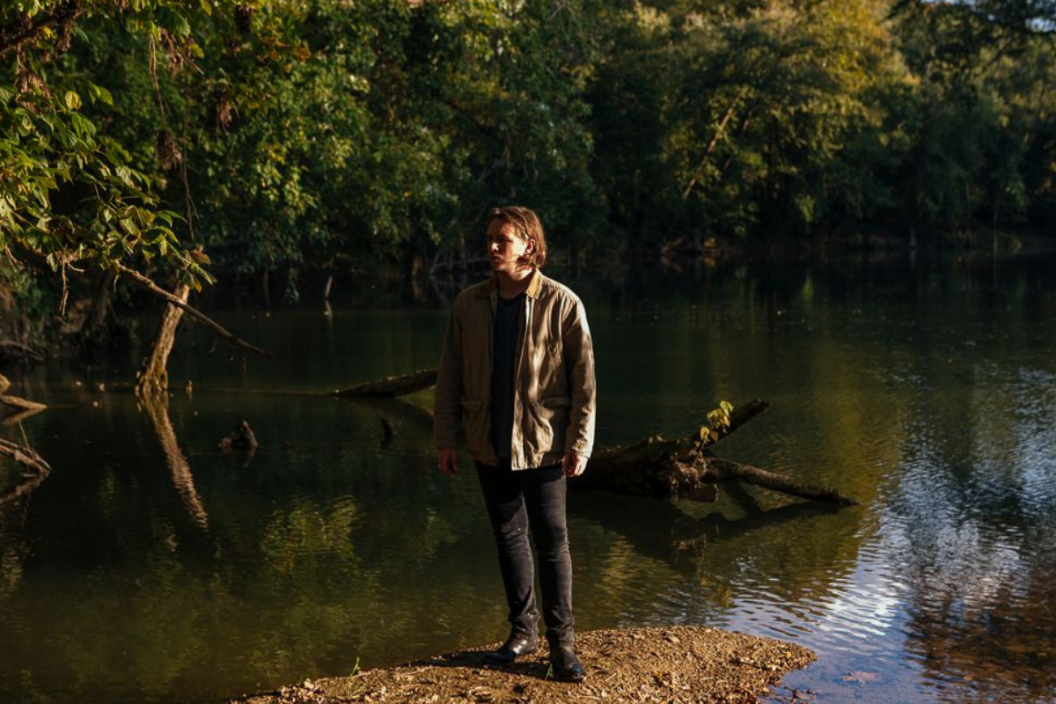The Last Stampede. That's what singer-songwriter Ian Noe planned to call his sophomore album when he went to record at The Bomb Shelter in Nashville with Andrija Tokic (Alabama Shakes, Langhorne Slim, Margo Price).
Videos by Wide Open Country
After recording 25 songs, Noe began messing around with how to sequence the tracks, causing him to circle back to a previous idea he'd bookmarked, River Fools & Mountain Saints (out March 25). Rooted in stories about the geography and characters from his home in Eastern Kentucky, it's Noe's most gripping and personal album yet.
With an abundance of time to piece the songs together during the pandemic, Noe opted to record the album on reel-to-reel tapes, a stark contrast from his Dave Cobb-produced debut Between The Country. It's something he admits having wanted to do for a while but hadn't had time to do due to touring and other obligations.
"With tape you have to make sure you have all your T's crossed and I's dotted because with tape there's no going back," Noe tells Wide Open Country. "You can't try things over and over like with Pro Tools—you only get one shot. That being said, the added pressure helps me to focus, and I love the warm feel that tape recordings like these provide."
That warmth permeates throughout River Fools & Mountain Saints, from the fuzzed out country rock of "Pine Grove (Madhouse)" to the subtle horns on "One More Night" and stringed orchestra on "Road May Flood/It's A Heartache." These soundscapes—easily Noe's most experimental yet—were further propelled by the studio additions of "Little" Jack Lawrence (The Raconteurs) on bass and Derry DeBorja (Jason Isbell & The 400 Unit) on keys, giving the album a distinct Bob Dylan and Creedence Clearwater Revival feel.
The new faces and foreign recording method were a blessing in disguise for Noe, who at the time was combating depression from pandemic-related isolation after COVID sidelined touring in March 2020. Both required an added focus from the artist that helped to take his mind off of some of the thoughts that had been plaguing him.
Right from the start of the album Noe confronts this on opening track "Pine Grove (Madhouse)" by describing the feeling as "stranded" in the tune's opening verse. According to Noe, putting music to these thoughts was critical in helping him cope with them.
"The whole time I'd been trying to write and play music to keep myself sane," Noe says. "That's what ['Pine Grove (Madhouse)'] is all about, playing music to help get through the darkest times in your life. I guess you could say music has been my antidepressant."
The album's despair reaches its climax on closing track "Road May Flood/It's A Heartache," a somber ballad inspired by the devastating floods that decimated Eastern Kentucky, including Noe's hometown of Beattyville, on March 1, 2021. The floods were the worst in the region in the 1930s and displaced hundreds of families in the area, with Beattyville being one of the towns worst hit.
Located at the confluence of the north and south forks of the Kentucky River, the humble mountain town was put completely underwater, leaving many residents and rescue crews to navigate the wreckage by boat. One of those affected was Noe's grandfather, who nearly lost his home to the floods. Shortly after the water receded Noe traveled home to help with clean up and was amazed by the level of damage he saw, saying "you could stick your pinkie finger down the vent in his upstairs bathroom and feel the water."
Despite last year's flood being nearly a century in the making, the phenomenon is a common enough occurrence in the region that Noe has long wanted to write a song about it.
"I've always wanted to write a song about how flooding happens, especially in Eastern Kentucky," Noe says. "There's so many roads [around Beattyville and nearby Irvine, Ky.] that have stories of people trying to cross them during floods and getting swept away. After everything happened last spring I was driving around with a friend in Franklin, Ky. and we saw a sign that said 'Road May Flood' so I jotted the praise down and the idea took off from there. The song really wrote itself."
After getting wind of a weatherman's report of flash flooding, the song's main character contemplates getting "myself a boat / a couple paddles and a good raincoat / dig myself the deepest moat / to keep it all at bay." Soon after, we realize his preparation is likely driven by PTSD ("And the last time it rained, I didn't sleep for weeks / worrying on those rising creeks") after losing his wife in a previous flood as she was swept away by the currents on a roadside he can't help but drive everyday to keep her memory alive.
Despite the heartbreaking end to the album, the 12 tracks of River Fools & Mountain Saints are full of many happy moments of commemoration as well.
"Strip Job Blues" is an ode to late uncle Jerry, who in the 1980s owned a coal company called ACE Coal. The story documents the sacrifice of his uncle while also acknowledging that what you gain from coal doesn't always compare to what you lose ("Blasted seams / and muddy streams / put the critters on the move / running from these strip job blues").
Noe later pays tribute to veterans in his hometown and elsewhere (P.O.W. Blues), a special ops mystery man who keeps getting called on at the ripe age of 41 ("Tom Barrett") and the region's varying indigenous and other cultures ("Burning Down The Prairie").
But perhaps the most quirky of these vignettes comes on "Mountain Saint," a story about an eccentric, weed-dealing mama who he'd regularly see around town and inquired with his friends about getting weed after overhearing them talk about her at their high school lunch table.
"I remember my friend telling me to give him $20 and he'd get me four joints," Noe says. "When I asked how he'd get it to me, he told me to meet him in the woods near the church at 8:30 in the morning and he'd bring it to me. I walked this long path into the forest and there he was—it was like he was there to give me The One Ring [from Lord Of The Rings] or something."
The highs and lows throughout River Fools & Mountain Saints sync perfectly with the geography described—rivers running low while the mountains tower over from above. While these ups and downs aren't exclusive to Noe or Eastern Kentucky, he has a way of breathing living color into his storytelling in a way that few other people or musicians can. The silver lining in his latest collection of stories is the resounding power of people to come together to overcome adversity, whether it's a community recovering from a flood, coal workers fighting for better pay and conditions or veterans and P.O.W.s adjusting to life after combat.
"I hope the album helps people to get through whatever hard times they're currently facing in their own lives just like how writing these songs helped me cope with the isolation of being stuck at home during the pandemic," Noe says.




